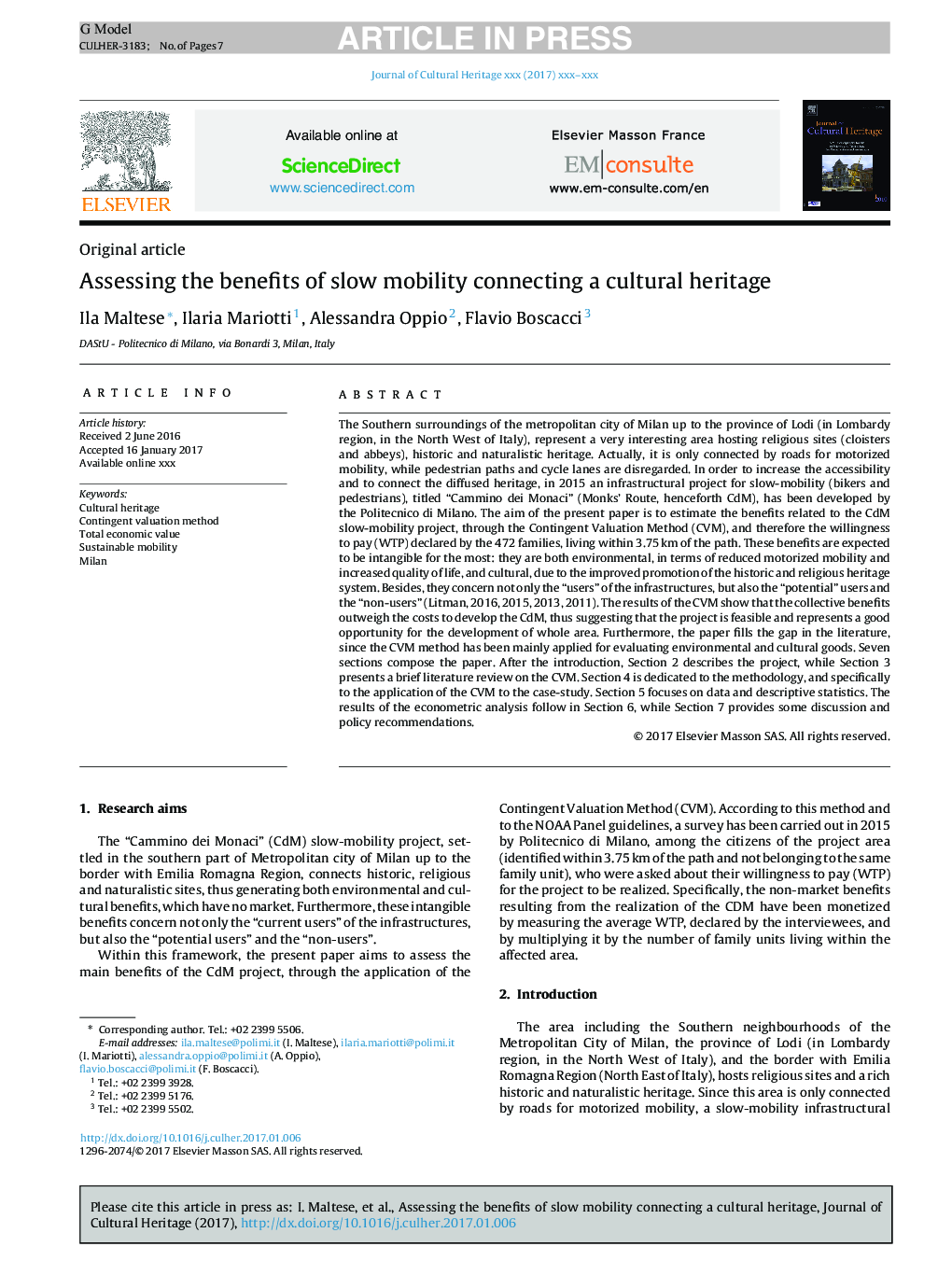| کد مقاله | کد نشریه | سال انتشار | مقاله انگلیسی | نسخه تمام متن |
|---|---|---|---|---|
| 5112750 | 1483950 | 2017 | 7 صفحه PDF | دانلود رایگان |
عنوان انگلیسی مقاله ISI
Assessing the benefits of slow mobility connecting a cultural heritage
ترجمه فارسی عنوان
ارزیابی مزایای تحرک آهسته اتصال یک میراث فرهنگی
دانلود مقاله + سفارش ترجمه
دانلود مقاله ISI انگلیسی
رایگان برای ایرانیان
کلمات کلیدی
میراث فرهنگی، روش ارزیابی احتمالی، ارزش اقتصادی کل، تحرک پایدار، میلان،
موضوعات مرتبط
مهندسی و علوم پایه
شیمی
شیمی تئوریک و عملی
چکیده انگلیسی
The Southern surroundings of the metropolitan city of Milan up to the province of Lodi (in Lombardy region, in the North West of Italy), represent a very interesting area hosting religious sites (cloisters and abbeys), historic and naturalistic heritage. Actually, it is only connected by roads for motorized mobility, while pedestrian paths and cycle lanes are disregarded. In order to increase the accessibility and to connect the diffused heritage, in 2015 an infrastructural project for slow-mobility (bikers and pedestrians), titled “Cammino dei Monaci” (Monks' Route, henceforth CdM), has been developed by the Politecnico di Milano. The aim of the present paper is to estimate the benefits related to the CdM slow-mobility project, through the Contingent Valuation Method (CVM), and therefore the willingness to pay (WTP) declared by the 472 families, living within 3.75Â km of the path. These benefits are expected to be intangible for the most: they are both environmental, in terms of reduced motorized mobility and increased quality of life, and cultural, due to the improved promotion of the historic and religious heritage system. Besides, they concern not only the “users” of the infrastructures, but also the “potential” users and the “non-users” (Litman, 2016, 2015, 2013, 2011). The results of the CVM show that the collective benefits outweigh the costs to develop the CdM, thus suggesting that the project is feasible and represents a good opportunity for the development of whole area. Furthermore, the paper fills the gap in the literature, since the CVM method has been mainly applied for evaluating environmental and cultural goods. Seven sections compose the paper. After the introduction, Section 2 describes the project, while Section 3 presents a brief literature review on the CVM. Section 4 is dedicated to the methodology, and specifically to the application of the CVM to the case-study. Section 5 focuses on data and descriptive statistics. The results of the econometric analysis follow in Section 6, while Section 7 provides some discussion and policy recommendations.
ناشر
Database: Elsevier - ScienceDirect (ساینس دایرکت)
Journal: Journal of Cultural Heritage - Volume 26, JulyâAugust 2017, Pages 153-159
Journal: Journal of Cultural Heritage - Volume 26, JulyâAugust 2017, Pages 153-159
نویسندگان
Ila Maltese, Ilaria Mariotti, Alessandra Oppio, Flavio Boscacci,
